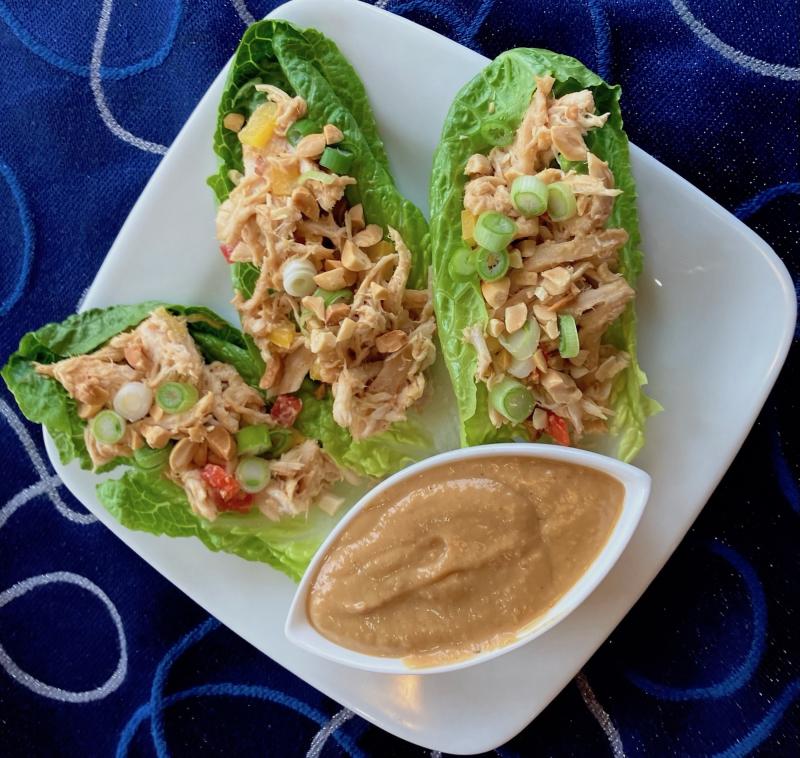From soup to nuts and beyond, peanuts pack a punch
Most of us consider peanuts quite ordinary; we may not realize this familiar food was held in such high esteem by the ancient Peruvians that they buried pots of peanuts with their mummified dead. Archaeologists have found pieces of pottery thousands of years old in South America fashioned in the shape of peanuts and decorated with peanut motifs. Who knew Mr. Peanut had such a pedigree?
Peanuts originated in what is now Brazil and Peru. By the time Spanish explorers reached the New World, they found peanuts growing as far north as Mexico. The Spanish brought peanuts with them when they returned to Europe, and subsequent trading voyages distributed the vines to Africa and Asia. Peanuts were brought to North America by enslaved Africans who cultivated peanuts in the warm climate of the southeastern seaboard states.
Peanuts are also called groundnuts, and food historians believe their nickname “goober” (or goober peas as mentioned in a 19th century song) comes from the Congo word nguba. Although we call them nuts, they are botanically legumes that have a papery brown skin and form inside a tan, net-patterned pod. Now widely grown throughout the southern United States, peanuts were originally cultivated as a commercial crop in Virginia and used for food and oil, and as a cocoa substitute.
Because peanuts were difficult to harvest, they were considered better for livestock feed. During the Civil War, Union soldiers discovered high-protein peanuts in the South and brought them north when they returned home. P.T. Barnum took peanuts to the masses, as his circus wagons traveled the country accompanied by vendors who sold hot roasted peanuts. Soon, street vendors began offering peanuts from carts parked in cities and at baseball games.
By the early 1900s, farming equipment and techniques transformed peanut farming into a far less labor-intensive process that delivered a more consistent result. Demand grew as quality improved, and the work of Dr. George Washington Carver helped peanuts replace cotton as a commercial crop. One of the most popular peanut products – peanut butter – was first introduced at the St. Louis World’s Fair in 1904. High-protein, shelf-stable peanut butter became an integral part of soldiers’ rations starting with World War I.
In its basic form, peanut butter is simply ground peanuts with either a smooth or chunky consistency. But, if you read the labels on the wide range of peanut butter varieties found on grocery shelves, you’ll find a number of other ingredients including salt, sugar, molasses and vegetable oil. In lower-fat styles of peanut butter, maltodextrin and soy protein replace a percentage of the peanuts. Of course, you’ll also find almond butter, cashew butter and sesame seed butter, just to name a few.
In addition to the ubiquitous childhood lunch favorite, peanut butter and jelly sandwiches, peanut butter is an essential ingredient in two types of soup and an Asian sauce. The peanut-chicken lettuce wraps in the photo combine shredded chicken with a spicy peanut sauce that also works as a topping for noodles. Virginia-style peanut soup can be found on the menu at the King’s Arms Tavern in Colonial Williamsburg, where it’s described as a recipe developed by George Washington Carver. The African version of peanut soup is filled with ingredients native to the continent, including yams and sometimes wilted greens. There are many recipes for this dish, all of them chunkier and not as creamy as their Virginia cousin, but still spicy and delicious.
King’s Arms Tavern Peanut Soup*
1/4 C butter
1 chopped onion
2 chopped celery stalks
3 T flour
8 C chicken stock
2 C smooth peanut butter
1 3/4 C light cream
finely chopped peanut
Melt the butter in a large saucepan over medium heat. Add the onion and celery; cook until softened, about 5 minutes. Whisk in the flour and cook an additional 2 minutes. Raise the temperature to high, pour in the chicken stock and bring to a boil. Reduce heat and cook until smooth and thickened, about 15 minutes. Strain the soup through a sieve and return liquid to the pot over low heat. Whisk in peanut butter and cream, cooking until heated through, about 5 minutes. To serve, ladle into bowls and garnish with chopped peanuts. Yield: 10 servings. *Adapted from The Colonial Williamsburg Cookbook.
African Peanut Soup
1 T peanut oil
2 chopped onions
1 T grated ginger
3 oz tomato paste
1 peeled, chopped yam
1 t salt
1/2 t cayenne
6 C vegetable broth
1 C creamy peanut butter
Heat oil in a large soup pot. Add onions and ginger; cook until translucent. Add tomato paste and stir to coat onions. Add chopped yam, salt and pepper; stir to combine. Pour in broth and bring to a boil; lower heat and cover. Simmer until sweet potatoes are softened, about 20 minutes. Stir in peanut butter and cook until heated through. Serve over white rice. Yield: 6 servings.
Spicy Peanut Sauce
1/4 C soy sauce
1/4 C rice wine vinegar
6 T water
1 T sugar
2 t grated ginger
1 t minced garlic
6 T smooth peanut butter
3 T peanut oil
3 T toasted sesame oil
1/2 t chili oil
Combine soy sauce, vinegar, water and sugar in the bowl of a blender. Add ginger and garlic; process until smooth, about 1 minute. Add peanut butter and process another minute. Pour in remaining ingredients and process on low until emulsified. Toss with shredded chicken and serve in lettuce wraps or drizzle over cooked ramen noodles. Yield: 1 C.























































